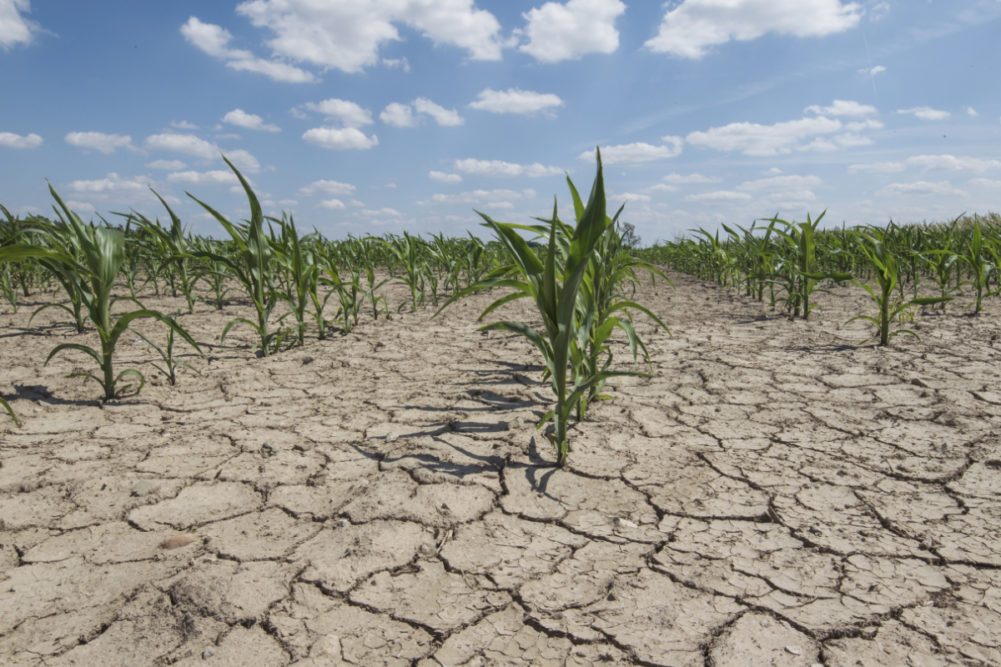WASHINGTON — Record-high temperatures in the Pacific Northwest and other parts of the West Coast along with prolonged drought in those areas and the Upper Midwest are stressing crops and livestock and raising concerns about irrigation supplies as conditions persist.
The US Drought Monitor as of July 13 showed 100% of all states west of the Rocky Mountains and most of the Upper Midwest region in some level of drought. California, Oregon, Arizona, Idaho, Utah and North Dakota were nearly 100% severe drought or worse (with extreme and exceptional the most severe). Washington, Montana, South Dakota, Minnesota, New Mexico, most of Wyoming and western Colorado all were in moderate or worse drought.
Subsoil moisture rated very short to short by the US Department of Agriculture as of July 11 was 85% in Washington (15% adequate), 88% in Oregon (12%), 63% in Idaho (37%), 94% in Montana (6%), 76% in Wyoming, 80% in North Dakota (20%) and 83% in South Dakota (17%).
Crop conditions vary widely as irrigated field and horticultural crops can survive as long as water supplies hold out, but that is a growing concern as some western growers already have accessed their “senior” water rights, which means irrigation water will bypass “junior” rights holders and flow to those holding rights the longest.
Some fruit berry crops in the key Pacific Northwest producing region have been damaged or deemed not adequate to harvest. Apples and other tree fruits have been “sunburned” to the point of reduced value or will be shifted from retail to processing.
“In northeast Oregon, winter wheat harvest started,” the Oregon USDA field office said. “Yields were low, and quality was poor. Spring crops were in very poor shape due to the high temperatures and drought conditions. Blueberry crop harvest was condensed with the hot weather due to early, mid and late season varieties maturing together. Raspberry crops had a lot of damage. Cherry crop harvest was hit hard. Vegetable crops were fine where there was good water supply. Late summer and fall water availability did not look good for grass, vegetable, garlic and carrot seed fields.”
In Washington, the state USDA office reported “widespread damage to raspberries and blueberries. High temperatures creased issues for orchards with little labor to get fruit off before heat affected the quality.” Fingers were crossed so far for the state’s apple crop with harvest still a few weeks away. Washington is the nation’s largest apple producing state. The state’s cherry crop was expected still to be good, but not the bumper crop originally expected.
The USDA rated pasture conditions as very poor to poor as of July 11 at 85% in Washington (11% fair), 71% in Oregon (19%), 47% in Idaho (36%), 80% in Montana (18%), 48% in Wyoming (37%), 71% in North Dakota (23%) and 66% in South Dakota (28%).
“There were multiple reports of worsening livestock conditions this week,” the Wyoming USDA state field office said for the week ended July 11. “Ranchers in Lincoln County reported they are beginning to sell livestock.” Other ranchers already were moving livestock to fall and winter pastures.
Drought conditions also are reducing crop potential in the Upper Midwest.
The US spring wheat crop was rated 16% good to excellent on July 11, 29% fair and 55% very poor to poor compared with 68% good to excellent last year. The ratings were the lowest since the drought year of 1988.
The USDA’s initial spring wheat other than durum production forecast for 2021 was 344,575,000 bus, down 41% from 2020 and the lowest since 205,460,000 bus in 1988. Average yield was forecast at 30.7 bus an acre, down 37% from 2020 and the lowest since 2002. Although 2021 spring wheat planted area was down 5.5% from 2020, harvested area was down 7%, suggesting a larger number of abandoned acres.
“Producers in the driest areas continue to make choices on abandoning or haying their wheat crop depending on yield potential,” the North Dakota Wheat Commission said in its July 13 update.
Also in the Upper Midwest, the Red River Valley on the border of Minnesota and North Dakota is the nation’s largest sugar beet growing region. The USDA in its July 12 World Agricultural Supply and Demand Estimates report forecast 2021-22 beet sugar production at 5,033,000 tons, down 3.7% from its June forecast “due to a reduction from last month of projected yield in the Upper Midwest … and a lower US area harvested forecast.”
The situation is especially critical for some organic grains, including wheat, which tend to be grown in concentrated areas, some of which are in major drought regions.
Mercaris, an organic and non-GMO agricultural marketing and analysis service, said drought conditions in parts of Wyoming, eastern Nebraska and the Dakotas increased “the chance of reduced yields and increased protein levels for organic wheat will likely put upward pressure on organic food grade wheat prices.”
The impact on availability and prices of crops from the affected regions mostly remains to be seen, although it certainly will contribute to the general inflationary food price trend as the country emerges from COVID-19 restrictions and demand surges.
One example came from the spring wheat market where futures traded on the Minneapolis Grain exchange set contract and eight-year highs last week.





